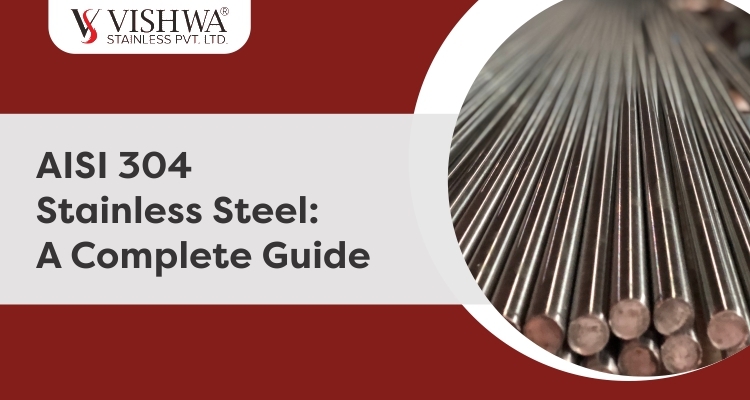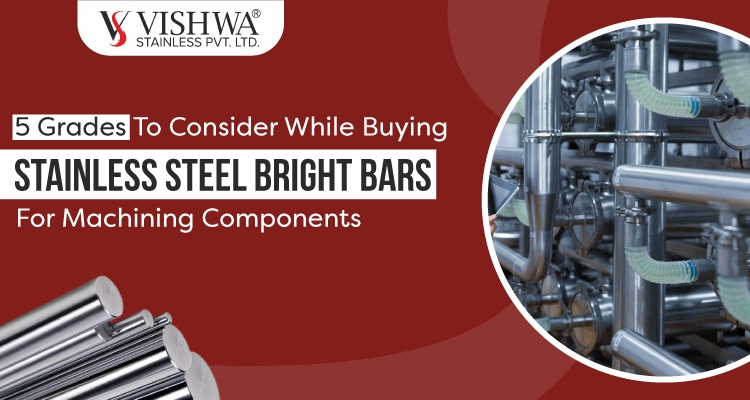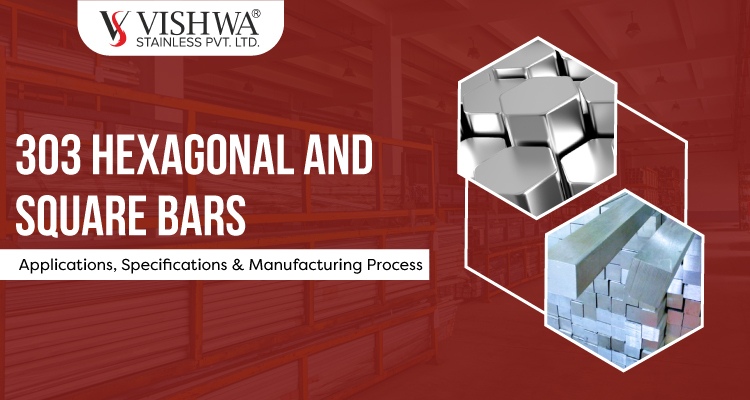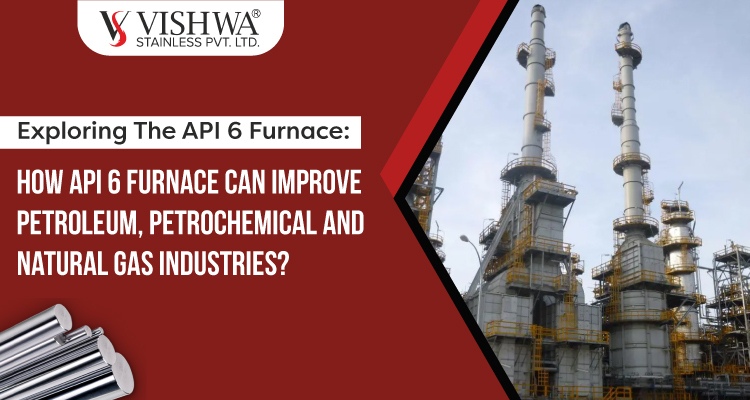Stainless steel is the most useful element operated in various industries, but when it comes to choosing the right stainless steel grade, industries get riddled.
Properties of stainless steel which need to be assured contain many matters such as the amount of nickel, chromium, workability, hardness, yield strength, and top of all corrosion resistance that can work constantly at every temperature without creating an effect on machinery.
Austenitic stainless steel grades such as AISI 304 stainless steel meet each requirement as mentioned above with offerings of 304 sub-grades which play a vital role in numerous industries according to their chemical properties. Below we will go through each of them with a detailed form of their uses and applications.
What is AISI 304 Stainless Steel?
AISI 304 – industrially denoted as 18/8, is an austenitic chromium-nickel stainless steel. The tag of AISI on it stands for (American Iron and Steel Institute), identifying its commercial availability of stainless steel or chromium steel.
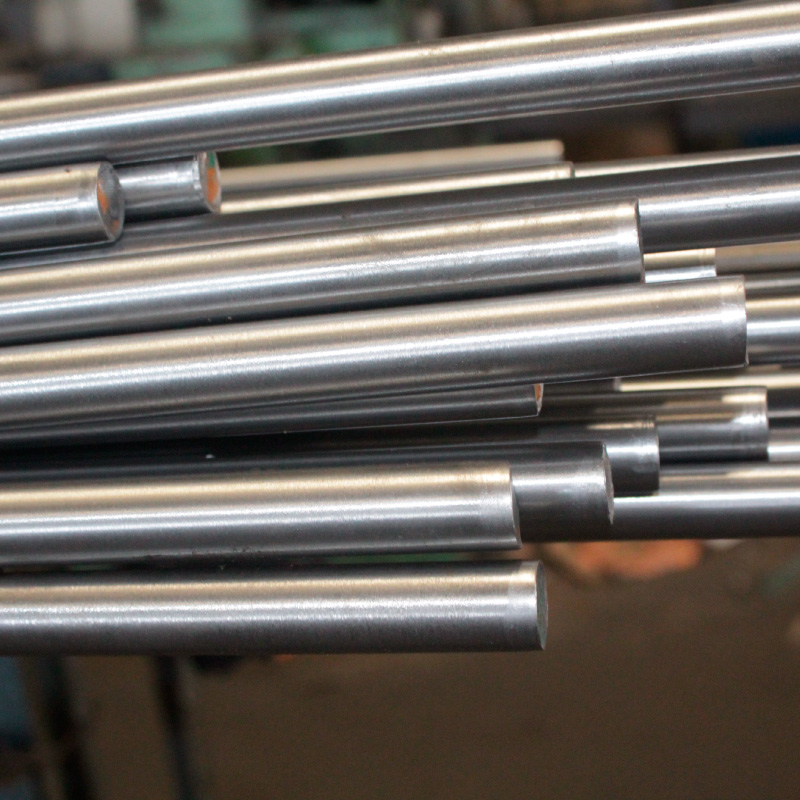
AISI 304 stainless steel composition mainly consists of 18% chromium and 8% nickel, and other stainless steel qualities enhancing alloys include nickel, manganese, silicon, nitrogen, carbon, phosphorus, and sulphur.
This stable arrangement of the AISI 304 stainless steel composition makes it ideal for corrosion resistance and durability.
AISI 304 Stainless Steel can be easily formed for complex structures which makes it flexible to get in use by multiple industries, including manufacturing, construction, and sanitaryware.
Alloys of AISI 304 can also be easily welded with an offering of NO-QUALITY-CHANGE corrosion resistance and low weightage, making AISI 304 a popular choice even for welding industries such as metal sheeting, wire mesh products, and steam piping.
3 Main Types of 304 Stainless Steel Grades:
304L Stainless Steel:
Now, what does “L” stand for in 304L, and how does it make all the difference?
Well, “L” is a grade that represents “Low-carbon” which makes a slight yet significant difference of 0.05% carbon content which makes it structurally weaker than AISI 304 Stainless Steel.
That doesn’t mean 304L can’t get participated in any industrial uses, rooming a matter of fact – 304L is massively considered more useful than other stainless steel grades for a way easier welding process by minimizing the carbide precipitation even in severely corrosive environments.
304L Stainless Steel Chemical Composition (in %)
| Carbon | 0.03 Max |
| Chromium | 18.00-20.00 |
| Iron | Makes up the Balance |
| Manganese | 2.00 Max |
| Nickel | 8.00-12.00 |
| Nitrogen | 8.00-12.00 |
| Phosphorus | 0.045 Max |
| Silicon | 0.75 Max |
| Sulphur | 0.030 Max |
Applications of 304L Stainless Steel:
- Welding industry
- Heat exchangers
- Chemical containers
- Dyeing industry
- Welded screens for mining
304H Stainless Steel:
“H” in 304H stands for “High” carbon content which denotes an increment of strength in handling high temperatures. If we analyze industrial uses, stainless steel grades 304 and 304H are the most widely used across the globe.
Being the best fit for high-temperature applications 304H stainless steel offers high strength for temperatures from 550° C to 800° C. An attribute of good oxidation resistance makes Stainless Steel 304H ideal even for periodic use at 870° C with continuous services till 925° C.
304H Stainless Steel Chemical Composition (in %):
| Chromium | 18.0 min.-20.0 max. |
| Nickel | 8.0 min.-10.5 max. |
| Carbon | 0.04 min-0.10 max. |
| Manganese | 2.00 |
| Phosphorus | 0.045 |
| Sulphur | 0.030 |
| Silicon | 0.75 |
Applications of 304H Stainless Steel:
- Boilers
- Heat exchangers
- Condensers
- Steam exhausts
- Electric generation plants
304LN Stainless Steel:
Increase in nitrogen, Improvement in yield strength!
304LN stainless steel grade is a derivation of this phrase only. Basically, 304LN is an austenitic grade with the boom of nitrogen to 304 stainless steel grade. It offers an increase in yield strength without imparting its flexibility.
Even high temperatures of 1000°C to 1100°C get easily handled by this grade which makes it more stable than 304L for martensitic transformations caused at low temperatures.
304LN Stainless Steel Chemical Composition (in %):
| Chromium | 18-20 |
| Nickel | 8-12 |
| Manganese | 2 max |
| Silicon | 1 max |
| Nitrogen | 0.1-0.16 |
| Phosphorous | 0.045 max |
| Carbon | 0.03 max |
| Sulphur | 0.03 max |
| Iron | Remainder |
Applications of 304LN Stainless Steel:
- Nuclear industry
- Petroleum industry
- Chemical industry
- Food industry
- Fabrication industry
AISI 304 Stainless Steel Properties:
| AISI 304 stainless steel annealing temperature | Typical values at 20°C |
| AISI 304 stainless steel density | 8 g/cm³ |
| AISI 304 stainless steel elastic modulus | 193 GPa200 GPa |
| AISI 304 stainless steel hardness | 215 HB |
| AISI 304 stainless steel tensile strength | 500-700 MPa590 MPa |
| AISI 304 stainless steel yield strength | 190 MPa240 MPa |
| AISI 304 stainless steel thermal conductivity | 1.72E-5 1/K |
| AISI 304 stainless steel melting point | 1450°C |
| AISI 304 stainless steel heat capacity | 500 J/(kg·K) |
| AISI 304 stainless steel electrical resistivity | 0.73 x 106 Ω·m |
AISI 304 Stainless Steel Chemical Composition (in %):
| Carbon | 0.07 |
| Chromium | 17.50 – 19.50 |
| Manganese | 2.00 |
| Silicon | 1.00 |
| Phosphorous | 0.045 |
| Sulphur | 0.015b |
| Nickel | 8.00 – 10.50 |
| Nitrogen | 0.10 |
| Iron | Balance |
AISI 304 Stainless Steel Characteristics:
AISI 304 Stainless Steel Corrosion Resistance:
304 stainless steel is the most popular stainless steel choice with the main feature of its corrosion resistance, which can easily resist chloride and simulate situations.
Stainless steel 304 cannot be readily hardened by thermal treatments but can easily be annealed which increases its workability and AISI 304 stainless steel yield strength.
AISI 304 Stainless Steel Machinability:
Machinability of stainless steel is what defines the ease of material where it can get cut or shaped with quality that meets smooth surface finishing and long-term machinability.
The machinability of AISI 304 is 70 – the same as AISI 304L labelled by the American Iron and Steel Institute standards.
AISI 304 Stainless Steel Hot Working:
The high heat resistance of AISI 304 stainless steel and oxidation make it ideal for temperatures up to 870 degrees Celsius.
These high temperatures aren’t highly recommended for regular use, especially when moisture is involved. This mismatch can thoroughly reduce the AISI 304 stainless steel workability and corrosion resistance efficiency.
AISI 304 Stainless Steel Heat Resistance:
Because of 304 stainless steel’s good resistance to oxidation, it provides continuous quality service from temperatures 870°C to 925°C. Continuous processing at temperatures such as 425°C – 860°C isn’t recommended.
For continuous processing at these high temperatures, stainless steel grade 304H is recommended. In case high strength is required for up to 500°C – 800°C temperatures, 304H stainless steel is recommended.
AISI 304 Stainless Steel Fabrication:
Stainless steel is a material that is used to avoid corrosion but don’t forget if its fabrication is not done properly, it won’t give results as desired.
So, precautions are needed to avoid corrosion resistance. Stainless steel fabrication should be done with dedicated stainless steel materials only and cleaned before being considered to use in fabrication.
AISI 304 Stainless Steel Cold Working:
The cold working of 304 stainless steel involved in its fabrication method requires intermediate heating temperatures to ease its work hardening and avoiding tearing and crackling.
As the conclusion of the whole stainless steel fabrication process, an entire annealing process is required that can reduce its internal stresses and optimise corrosion resistance.
AISI 304 Stainless Steel Heat Treatment:
The hardened form of 304 stainless steel cannot be achieved by heat treatment.
So as a solution to the situation, annealing and solution treatment are required which needs to be done by rapid cooling after heating stainless steel at 1010°C – 1120°C temperature.
AISI 304 Stainless Steel Welding:
The welding performance of 304 stainless steel serves quality even if it’s done with or without fillers.
For stainless steel 304, grade 308 stainless steel filler rods and electrodes are recommended. Heavy welded sections such as splices on transfer girders may require post-weld annealing.
AISI 304 Stainless Steel Applications:
- Food and Catering
- Offshore Technology
- Seawater Desalination Plants
- Chemical Industry
- Bridges
- Storage Tanks
- Medical Industry
- Civil Engineering
- Power Plants
- Shipbuilding Industry
- Kitchen sinks, consumer durables
- Automotive and aerospace components
- Fasteners and flange manufacturing
About Vishwa Stainless Steel Pvt. Ltd.
As we noticed through our blog, the need for stainless steel is increasing worldwide, and to meet the needs of each of their industries’ requirements Vishwa Stainless Steel Pvt. Ltd. manufactures corrosion-resistant, sturdy, and low-maintenance stainless steel bright bars that can cater to both domestic and industrial use.
Stainless steel bright bars manufactured by Vishwa Stainless Steel Pvt. Ltd. gets processed with the latest technology that assures high surface smoothness and quality assurance making us leading manufacturers of leading stainless steel products manufacturers such as stainless steel bright round bars, hexagonal bars, square bars, precision bars, polished bars, hardened bars, cold drawn bars, and wires.
Delivering these high integrated values and stainless steel products made us leading stainless steel bright bar manufacturers in India as well as foreign market such as Australia, Germany, Italy, Poland, Spain, Netherlands, UAE (United Arab Emirates), Turkey, UK, USA, Canada, Lebanon, Iran, Saudi Arabia, Denmark, Mexico, Bangladesh and more that perfectly meets their specifications requirements.

